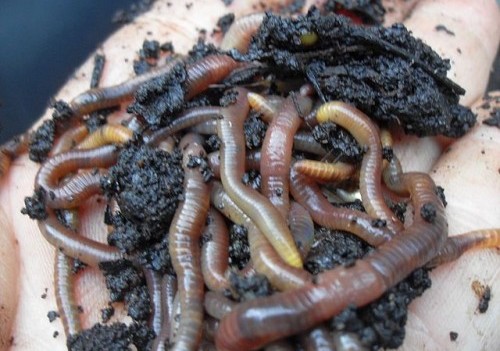The smart Trick of North Carolina Worms That Nobody is Discussing
The smart Trick of North Carolina Worms That Nobody is Discussing
Blog Article
Things about North Carolina Worms
Table of ContentsNorth Carolina Worms - The FactsThe 6-Minute Rule for North Carolina WormsNorth Carolina Worms - TruthsUnknown Facts About North Carolina WormsUnknown Facts About North Carolina Worms
Example: 1-gallon of worm castings to 4 gallons of potting mix. 1/2 cup in the base of the planting hole for smaller plants. 1 cup for bigger plants.We discover that worm spreadings are not really required for seed starting., promotes much better germination prices and plant health and wellness.
The enhancement of tea can also include increased microbial biomass to your soil. Worms. You can constantly side-dress your plants with worm spreadings at any moment. Just keep in mind, the bacteria will certainly pass away if subjected to UV rays (Sun), so make sure to cover the castings with an inch or two of soil

This frustrated them for years till the screening techniques came to be much better. It would get much better(with more castings), level off, and after that decline. Too many worm spreadings would accelerate the growth to a speed that the plant might not recuperate from.
Some Ideas on North Carolina Worms You Should Know
I have clarified the virtues of worm spreadings for regarding 2000 words. Worm spreadings are no various. It takes time to create top quality worm castings.
You can acquire them which results in second. Worm castings definitely cost more than chemical plant foods. Nevertheless, worm spreadings are on the less costly end of natural fertilizers. You will have to decide what is more crucial. It is easy to generate percentages of worm spreadings. (50 gallons each year) It is a much harder and very costly financial investment to create big quantities of worm castings.
I would place worm castings up versus any type of plant food (chemical or natural) for plant health and wellness and return. We have chatted about the lots of advantages of worm spreadings.
Developing a healthy and balanced soil might be the biggest benefit of worm castings. We reviewed worm spreadings NPK and likewise the correct nutrient analysis that should use to worm spreadings.
North Carolina Worms - Truths
We chatted concerning some of the downsides connected with worm castings. I covered a whole lot of material in this short article.
(https://lnk.pblc.app/pub/145287bf4bba37)The vertical burrows are generally open, although the worms top the leading with deposit and excrement. Origins require oxygen for their growth, whereas they produce carbon dioxide that needs to leave the soil.

North Carolina Worms Fundamentals Explained
In an additional study, earthworms were approximated to take in 4 to 10 percent of the top 6 inches of the dirt yearly. This only goes to reveal the substantial amounts of soil that can be processed by earthworms. Dirt compaction lowers the porosity of the dirt. Since earthworms enhance porosity, they lower the impacts of compaction.
Common earthworm populations can conveniently take in 2 loads of completely dry issue per acre annually, partially digesting and mixing it with dirt. The relevance of earthworms to blend surface area residue with soil comes to be very clear in soils that do not have any earthworms. The majority of our Pennsylvania dirts contend the very least some earthworms, and the result of their full absence, as a result, can not be noted.
In these dirts, the development of topsoil with reasonable natural issue content did not happen, leading to inadequate plant growth. As soon as the cause was developed, the government of the Netherlands began a campaign to present earthworms. After the intro of the earthworms, a dark topsoil layer was formed, and crop development raised substantially.
Some Known Facts About North Carolina Worms.
They live primarily from partially decomposed raw material that is already incorporated in the soil. They eat their way with the soil, creating horizontal burrows that they fill up with their excrement. These species ingest huge amounts of dirt that they combine with digested crop residue in their guts. or anecic varieties stay in long-term vertical burrows that can be 5 or 6 feet deep.
Their burrows continue to be open, although they cap the leading with plant residue that they draw to the entryway. These species consume considerable quantities of dirt that they blend with absorbed deposit in their guts. Their excrement is mostly deposited at the surface of the dirt. The nightcrawler Lumbricus terrestris is the most noticeable member of this group.
Report this page